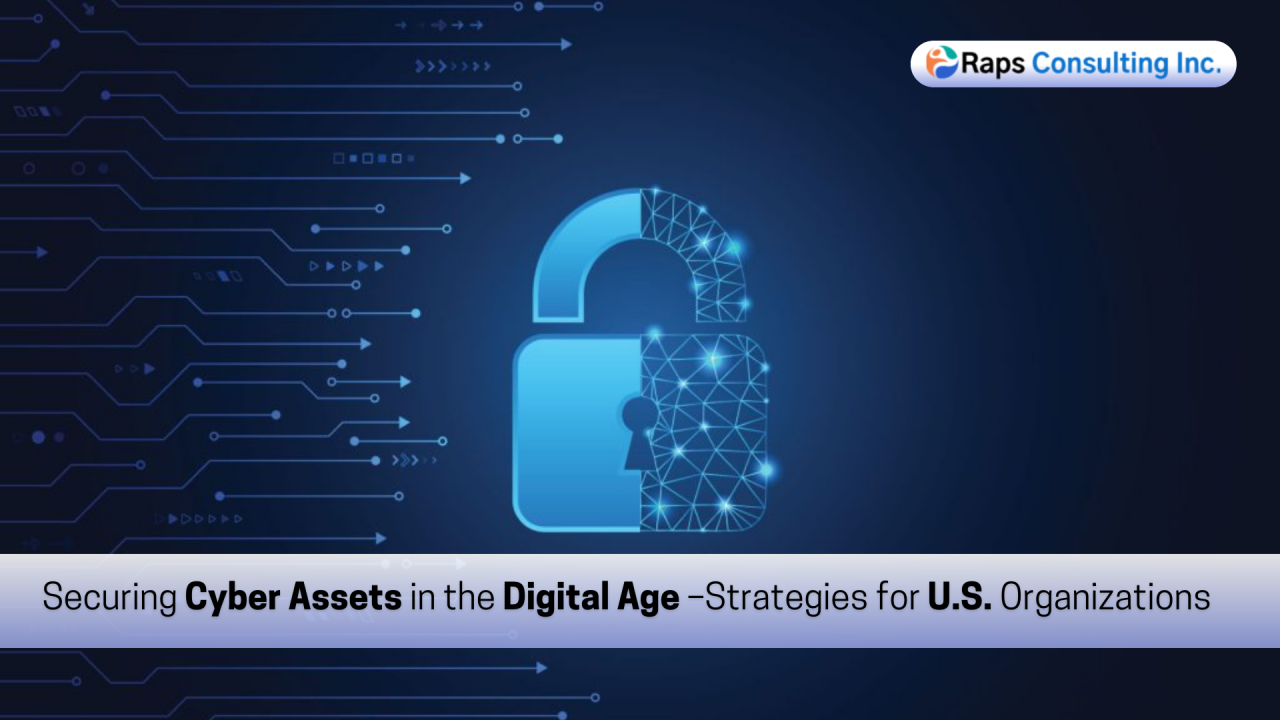Cyber threats are evolving at a breakneck pace, and organizations across industries are under immense pressure to protect their digital assets. Securing cyber assets has become a critical priority as cybercriminals leverage increasingly sophisticated tactics to exploit vulnerabilities. From large enterprises to mid-sized businesses, the cost of inaction is high—ransomware, phishing attacks, and data breaches are now multi-million-dollar threats that can cripple operations, damage reputations, and lead to severe financial and regulatory consequences.

The Escalating Threat Landscape
Recent reports indicate that cybercrime will cost businesses over $10.5 trillion annually by 2025. In the U.S. alone, data breaches have surged, with the average breach costing organizations $4.45 million (IBM Security, 2024). State-sponsored cyberattacks, insider threats, and supply chain vulnerabilities have intensified, making cybersecurity a boardroom-level priority rather than just an IT concern.
Key Challenges Facing U.S. Organizations
Ransomware & Data Extortion: Cybercriminals use double-extortion tactics, encrypting data and threatening to leak sensitive information unless a ransom is paid.
Regulatory Compliance Pressure: Companies must comply with complex regulations like HIPAA and SOC 2, facing heavy penalties for non-compliance.
Human Error & Insider Threats: 74% of breaches are caused by human vulnerabilities, emphasizing the need for cybersecurity training.
Cloud Security Risks: Misconfigurations, lack of encryption, and unauthorized access expose critical assets as organizations move to the cloud.
Strategic Imperatives for Cyber Resilience
Organizations must adopt a proactive and multi-layered approach to cybersecurity—**a crucial step in securing cyber assets against evolving digital threats.
✔ Zero Trust Architecture: Shift from perimeter-based security to identity verification, least-privilege access, and micro-segmentation.
✔ Continuous Threat Detection & Response: Use real-time monitoring and AI to detect breaches in minutes, not months.
✔ Regular Security Audits & Risk Assessments: Identify vulnerabilities proactively before they’re exploited.
✔ Cybersecurity Talent & Workforce Readiness: Address the skills shortage by partnering with experienced professionals for resilience.
Upcoming Webinar: Securing Cyber Assets in the Digital Age
With cyber threats evolving rapidly, organizations must act now. Join RAPS Consulting Inc ’s exclusive webinar on March 26, 2025, where our cybersecurity experts will discuss:
- The latest cyber threats and trends impacting U.S. businesses.
- Best practices to protect critical assets and maintain compliance.
- Strategies to build a resilient cybersecurity framework for long-term security.
How RAPS Consulting Can Help
At RAPS Consulting, we provide tailored cybersecurity solutions focused on securing cyber assets and protecting businesses from emerging threats. Our services include:
✔ 24/7 Threat Monitoring & Incident Response – Ensuring real-time detection and mitigation of cyber threats.
✔ Compliance & Risk Management – Assisting organizations in meeting regulatory requirements and minimizing risk exposure.
✔ Cybersecurity Workforce Solutions – Providing skilled security professionals to safeguard your organization.
✔ Security Awareness & Training Programs – Strengthening your workforce against social engineering and insider threats.
Is Your Organization Cyber-Ready?
Securing cyber assets is a business necessity. Contact RAPS today to strengthen your defenses and ensure compliance before a breach happens.
FAQs
Q1. Why is securing cyber assets important for U.S. organizations?
Ans. Securing cyber assets protects sensitive data, maintains business continuity, and prevents financial and reputational damage from cyberattacks.
Q2. What are the most common cyber threats to U.S. organizations?
Ans. Common threats include ransomware, phishing, data breaches, insider threats, and advanced persistent threats (APTs).
Q3. How can RAPs enhance compliance with cybersecurity regulations?
Ans. RAPs identify gaps and ensure cybersecurity practices align with regulations like GDPR, HIPAA, or CMMC.





